- News
- Reviews
- Bikes
- Accessories
- Accessories - misc
- Computer mounts
- Bags
- Bar ends
- Bike bags & cases
- Bottle cages
- Bottles
- Cameras
- Car racks
- Child seats
- Computers
- Glasses
- GPS units
- Helmets
- Lights - front
- Lights - rear
- Lights - sets
- Locks
- Mirrors
- Mudguards
- Racks
- Pumps & CO2 inflators
- Puncture kits
- Reflectives
- Smart watches
- Stands and racks
- Trailers
- Clothing
- Components
- Bar tape & grips
- Bottom brackets
- Brake & gear cables
- Brake & STI levers
- Brake pads & spares
- Brakes
- Cassettes & freewheels
- Chains
- Chainsets & chainrings
- Derailleurs - front
- Derailleurs - rear
- Forks
- Gear levers & shifters
- Groupsets
- Handlebars & extensions
- Headsets
- Hubs
- Inner tubes
- Pedals
- Quick releases & skewers
- Saddles
- Seatposts
- Stems
- Wheels
- Tyres
- Health, fitness and nutrition
- Tools and workshop
- Miscellaneous
- Cross country mountain bikes
- Tubeless valves
- Buyers Guides
- Features
- Forum
- Recommends
- Podcast
review
£1,099.99
VERDICT:
Competent disc-braked all-rounder, but this Orange lacks a certain zest
Weight:
10,700g
Contact:
www.orangebikes.co.uk
At road.cc every product is thoroughly tested for as long as it takes to get a proper insight into how well it works. Our reviewers are experienced cyclists that we trust to be objective. While we strive to ensure that opinions expressed are backed up by facts, reviews are by their nature an informed opinion, not a definitive verdict. We don't intentionally try to break anything (except locks) but we do try to look for weak points in any design. The overall score is not just an average of the other scores: it reflects both a product's function and value – with value determined by how a product compares with items of similar spec, quality, and price.
What the road.cc scores meanGood scores are more common than bad, because fortunately good products are more common than bad.
- Exceptional
- Excellent
- Very Good
- Good
- Quite good
- Average
- Not so good
- Poor
- Bad
- Appalling
Created as a tough on and off road all-rounder, with room for big tyres and potential for fully loaded touring, there's nothing much wrong with the Orange RX9. But there's nothing much exceptional about it and there's a certain panache, an X Factor, lacking, and that will matter a lot to some riders.

West Yorkshire based Orange Bikes was established way back in 1988. It's a mountain bike brand that has a good reputation and a very loyal following, not least because they make some of their bikes from scratch in Halifax, although this isn't one of them. Like most other 'UK born and bred' brands most of their frames are made in the far east for economies of scale reasons.
The RX9 occupies its own Cross/Freeroad category within the Orange range. Every other bike is a mountain bike.
While the RX9 stays loyal to Orange's admired no-nonsense design ethic, it essentially performs the same function as many other bikes out there, but unfortunately without any particular flair in either design, finish or ride quality.
I like the smooth and nicely modulated lever feel of the disc brakes and I like the fact that there's more tread room than on many other cyclo cross bred bikes. It's not light, though. The frame detailing is workmanlike rather than finessed and the straight blade aluminium fork doesn't do it any favours for comfort compared to the more common carbon forks on aluminium-framed road/cross bikes around this price.
Orange have made a few decent road bikes over the years, most notably a titanium-framed offering and the aluminium-framed Dynamo in the 1990s. They also showed a limited production run carbon frameset at Eurobike a couple of years back, so a bike like the RX9 was bound to emerge sooner or later.
It's based around a fairly fat tubed heat treated double butted aluminium frame and fork.
The geometry is slightly more relaxed than a typical race-bred 'cross bike and the ride emphasis is firmly on all-round utilitarian adaptability rather than pure speed.
With the build emphasis on ride-anywhere durability rather than low weight I wasn't too surprised to find that the complete bike tipped the scales at 23.55lb. That's slightly heavier than a few other cross-bred road offerings we've tried at close to the £1000 mark.
Aesthetically the frame is chunky and purposeful rather than smooth or pretty. You'll need to feel drawn to 'Carrot Top' Orange as a colour as well as a brand.
A fat, slightly sloping top tube and down tube are flared at the ends to create big weld contact areas at the head tube, seat tube and bottom bracket junctions. Triple cable guides go over the top of the top tube, with full outer cable all the way to the rear brake.
The front mech cable runs around a pulley on the back of the seat tube to allow a bottom pull mech. This runs fine when new but our experience is that rear wheel spray and dirt soon starts to mess with smooth cable operation.
There are two sets of bottle bosses plus bolted rack mounts on the seat stays but you'd need to use a spacer on the left hand dropout eyelet to enable rack or mudguard stays to clear the disc brake calliper. The fork has threaded mudguard eyelets.
The machined head tube is reinforced top and bottom, with an integrated headset stopping the front end from feeling lanky but still leaving a good stack of washers and an either way up stem for bar height adjustments.
There's room for tyres up to abut 38mm between the chain stays, and bigger up front '' useful if you're planning to spend a lot of time off road. The geometry, with 71 degree head and and 73 degree seat is also very much at ease with much skinnier tyres for fast road use. The relatively long front centre allows close fitting mudguards without any toe overlap.
Road and trail notes
In use, the first thing I noticed on was that the front wheel wasn't centred in the fork.
It wasn't enough to cause a steering issue but seeing the tyre set off centre is disconcerting. On inspection it turned out that the left hand dropout had already been filed out slightly in an attempt to rectify this, but it needed filing more. We've been assured that this was just an issue with this early sample bike.

Everything else was well aligned and well finished, although a few riders commented on the lumpy welds. A couple of years ago we wouldn't expect pretty welds on aluminium frames but a new breed of smooth welded frames has raised the game in aesthetic terms.
I spent about half of the test period on bumpy country roads and trails, with a few managed mountain bike trails thrown in for good measure.
Tough Mavic A119 rimmed wheels with file treaded 35mm Continental Cyclocross tyres did the job perfectly adequately in all but the muddiest conditions. They rolled fast on the road, but there was no escaping the fact that the frame and fork don't do comfort any favours.
I ended up running about 40psi in the tyres on the rougher trails as a compromise between shock absorption and resistance to pinch flats, but about 65psi felt about right on the road.
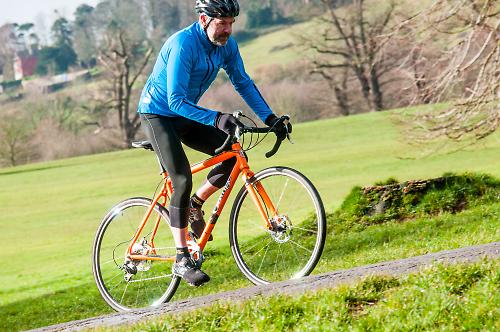
I couldn't really fault the steering, climbing and descending characteristics and overall comfort was fine on the road: well balanced at both high and low speeds.
Bikes like the RX9 create an identity bridge for riders who have previously seen themselves as either pure mountain bikers or pure road riders. They get their go-anywhere capabilities from the wide range of on and off rod 700C tyres now available and the increasing popularity of disc brakes on road and cyclo cross bikes.
The RX9 is relaxed in either environment, and commuting duties are well catered for too. It's a pity Orange didn't manage a build that could drop it under the common £1000 price ceiling for ride to work schemes, but that would presumably have meant a few parts compromises.
Avid's well established low budget BB5 cable pull disc brakes provided totally reliable stopping duties at the same time as leaving masses of room for mud, full mudguards or slightly fatter tyres.
Orange claims the RX9 is built for 'just about any terrain this side of rocks and boulders' with 'a firm tick in the box next to Fun'. I'd almost agree with that.
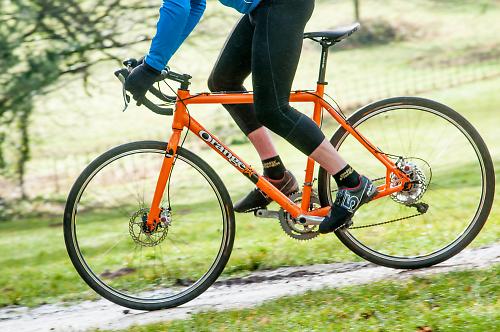
Its aluminium tubes create a frame that, in Orange's own words 'is stiff enough to put your power to the black stuff, while being comfy enough to take the edge off and road chatter'.
I'd agree with the 'stiff' bit, but as I've already mentioned the aluminium fork doesn't do comfort any favours.
Orange's promotional video is well worth a watch though: it really captures the essence of this sort of bike.
It's worth mentioning that the geometry of the RX9 varies slightly depending on sizing (52, 54, 56, 58 and 60cm sizes are available). Our 56cm test bike is based on fairly standard 71/73 angles, with a horizontal tube tube reach that's exactly the same as the 56cm seat tube length. The smaller sizes are slacker at the head, larger sizes are steeper.
The drivetrain parts are an efficient mix of Shimano Tiagra (shifters, compact 34/50 crankset and front mech) and 105 (rear mech), robust Deore mountainbike hubs and a 12-28 cassette.
The stem, the compact drop handlebar and the seat post are fairly decent quality Easton EA50 offerings and the saddle is a tough racy model from SDG that's more comfy than it looks.
Avid's BB5R brakes are easy to set up, with easy pad adjustment on the inner side via a hand turned adjustment wheel.
I enjoyed most of my time on the RX9, but with some reservations. Its bias is neither on or off road. It falls between two stools, as do many other bikes of this type.
To some riders that'll be an ideal compromise.
But it was sharing the test period with Surly's steel-framed Straggler, which for £400 more is a whole lot more fun on rough roads and trails. Despite the fact that it weighs in at 1.5kg more than the Orange, it's as much fun (if slightly slower) on tarmac and a more complete all-rounder.
The Orange also shared the test period with two faster and more inspiring all-rounder disc-equipped road bikes that cost about the same.
So, depending on your bias, it's either a compromised all-rounder or an ideal all-rounder.
If I'd felt more impressed by the fine detail I might have been tipped towards the latter, but as it stands it falls into the 'could do better' category.
Verdict
Competent disc-braked all-rounder, but this Orange lacks a certain zest
road.cc test report
Make and model: Orange RX9
Size tested: 56
About the bike
State the frame and fork material and method of construction. List the components used to build up the bike.
Butted aluminium frame and fork, welded. Shimano drivetrain (Tiagra and 106 mix) 34/50 up front, 12-28 rear. Easton and Orange finishing componentry. Avid BB5R brakes. Mavic A119 rims on Deore hubs, Conti Cyclocross file treaded 35mm tyres
Tell us what the bike is for, and who it's aimed at. What do the manufacturers say about it? How does that compare to your own feelings about the bike?
Orange says "Built with the Orange Bikes' ride philosophy firmly at the top of the list, the slack (for CX/Road rules of thumb) geometry hits the right balance to ride just about any terrain this side of rocks and boulders. We built it to be a workhorse and also to put a firm tick in the box next to 'Fun'.
The RX9 is our go-anywhere, black top or dirt track mile muncher. Whether you're commuting to work, exploring the local countryside or taking a cruise along the coast, the RX9 will smooth out the miles. The double-butted alloy frame has been honed to provide a frame that is stiff enough to put your power to the black stuff, while being comfy enough to take the edge of any road chatter.
This is the bike for anything, with mounts for mudguards or racks, 10-speed Shimano components, disc brakes, and an alloy fork ensure sharp handling and confidence in any conditions."
We found that it didn't quite live up to expectations, mainly due to the harsh ride of the aluminium fork but also due to aspects of the fine detail that lacked panache
Frame and fork
Overall rating for frame and fork
5/10
Tell us about the build quality and finish of the frame and fork?
Nothing wrong with the basic construction, and we'll have to assume the offset fork dropouts were an error on this sample only, but a little more attention to fine detail would have been nice at this price.
Tell us about the materials used in the frame and fork?
Butted aluminium frame and fork.
Tell us about the geometry of the frame and fork?
56cm bike has 71 head angle, 73 seat. Geometry varies according to size.
How was the bike in terms of height and reach? How did it compare to other bikes of the same stated size?
Well balanced for a 56. No moans.
Riding the bike
Was the bike comfortable to ride? Tell us how you felt about the ride quality.
Fine on the road but less comfy over rough terrain than similar bikes with carbon forks.
Did the bike feel stiff in the right places? Did any part of the bike feel too stiff or too flexible?
Felt good on the road, good power transfer but overly harsh up front off road.
How did the bike transfer power? Did it feel efficient?
Excellent.
Was there any toe-clip overlap with the front wheel? If so, was it a problem?
No.
How would you describe the steering? Was it lively, neutral or unresponsive? Dead neutral, in the best sense.
Tell us some more about the handling. How did the bike feel overall? Did it do particular things well or badly?
General handling is excellent.
Which components had the most effect (good or bad) on the bike's comfort? would you recommend any changes?
35mm tyres are usually fine on a bike like this, but there were times when we wished for bigger tyres to overcome the harsh front end on rougher trails.
Which components had the most effect (good or bad) on the bike's stiffness? would you recommend any changes?
Every rider will have different ideas about tyre style/size.
Which components had the most effect (good or bad) on the bike's efficiency? would you recommend any changes?
Very welcome compact flat topped handlebar shape.
Rate the bike for efficiency of power transfer:
7/10
Rate the bike for acceleration:
7/10
Weight noticeable at times.
Rate the bike for sprinting:
6/10
Rate the bike for high speed stability:
7/10
Rate the bike for cruising speed stability:
7/10
Rate the bike for low speed stability:
7/10
Rate the bike for flat cornering:
7/10
Rate the bike for cornering on descents:
7/10
Rate the bike for climbing:
6/10
Weight noticeable at times.
The drivetrain
Rate the drivetrain for performance:
8/10
Rate the drivetrain for durability:
8/10
Rate the drivetrain for weight:
7/10
Rate the drivetrain for value:
6/10
Tell us some more about the drivetrain. Anything you particularly did or didn't like? Any components which didn't work well together?
Everything works well, but we've seen better parts on bikes at this price.
Wheels and tyres
Rate the wheels and tyres for performance:
6/10
Rate the wheels and tyres for durability:
7/10
Rate the wheels and tyres for weight:
6/10
Rate the wheels and tyres for comfort:
6/10
35mm tyres are usually fine on bikes like this, but the harsh fork could be tempered by a 38mm tyre up front.
Rate the wheels and tyres for value:
6/10
Controls
Rate the controls for performance:
7/10
Rate the controls for durability:
7/10
Rate the controls for weight:
6/10
Rate the controls for comfort:
8/10
Your summary
Did you enjoy riding the bike? Yes, with reservations.
Would you consider buying the bike? No.
Would you recommend the bike to a friend? No.
Rate the bike overall for performance:
6/10
Rate the bike overall for value:
5/10
Anything further to say about the bike in conclusion?
We'd expect to see a few changes in the fine detail on future RX9 models. It feels like it's just not quite there yet.
About the tester
Age: 58 Height: 181 Weight: 78kg
I usually ride: Merlin Ti My best bike is: Ibis Silk SL
I've been riding for: Over 20 years I ride: Every day I would class myself as: Expert
I regularly do the following types of riding: cyclo cross, commuting, touring, club rides, sportives, general fitness riding, fixed/singlespeed, mtb,
Latest Comments
- Barraob1 16 min 52 sec ago
Is that justification for murder?
- ktache 24 min 44 sec ago
I have recently obtained a SPD axle removal tool from eBay, ali, anodised in blue, wanted orange. I presume it's Chinese made, too much of a...
- ChasP 26 min 18 sec ago
I find it helps particularly with a brand new tyre that retains it's folded shape to seat it with an inner tube and leave for a while. You can then...
- ktache 47 min 18 sec ago
I'm just about to upgrade my parks to wera. Their torxs are superb.
- Rendel Harris 1 hour 5 min ago
It's not available on the NHS but it can legally be prescribed by private doctors.
- ktache 1 hour 10 min ago
Was thinking about getting a Rohloff one, but then I got a Rohloff which made it a bit pointless. And, of course I only found about it when I was...
- pockstone 2 hours 27 min ago
If one's knuckles are several inches below one's ankles...?
- giff77 3 hours 52 min ago
Longwater junction is just nasty at the best of times. Road markings have vanished and it's a total free for all no mater what direction you are...
- chrisonabike 4 hours 19 min ago
Agree about the blue badge / double yellows ... as you say it's moot in practice....

















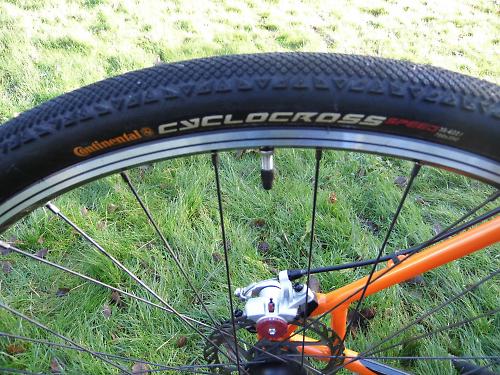

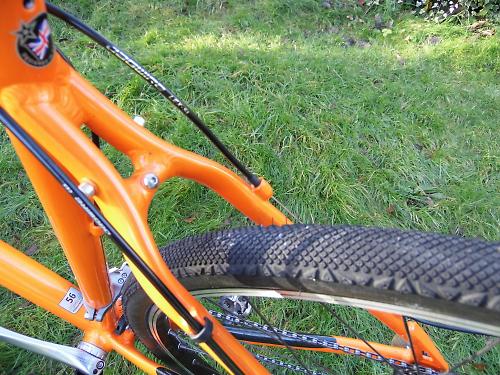
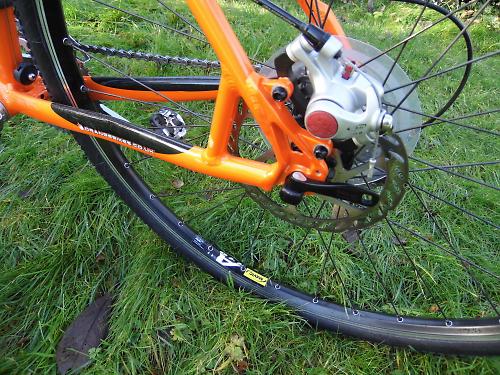

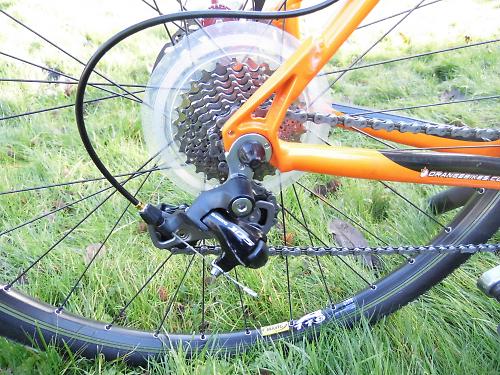
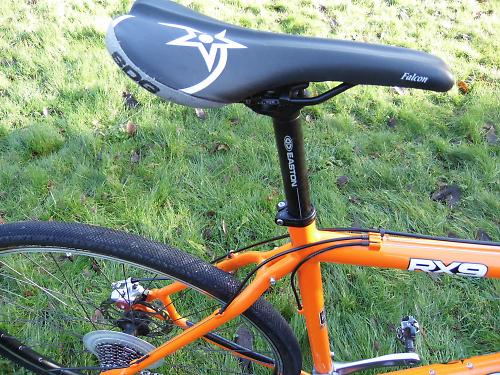
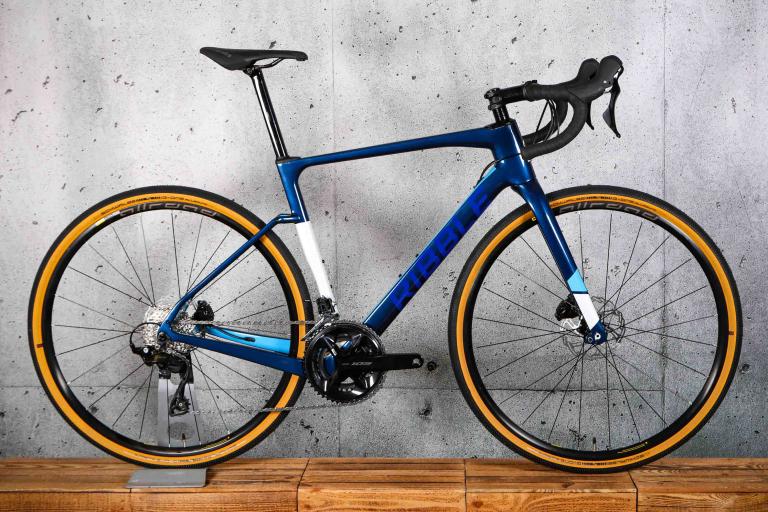
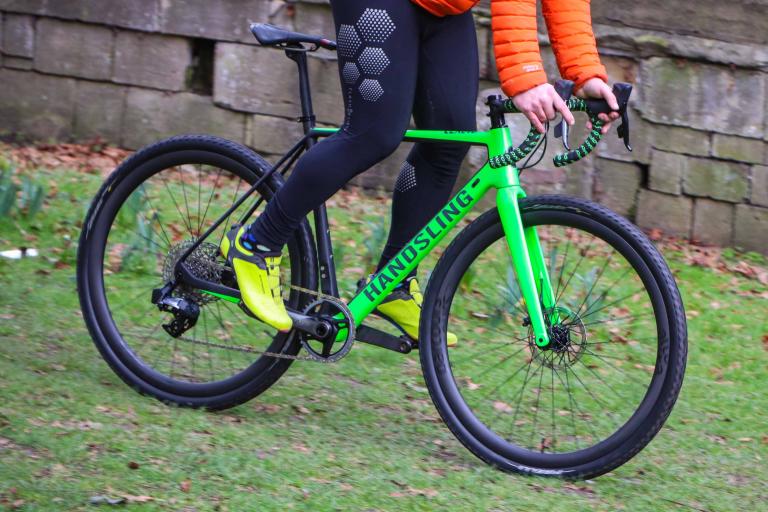

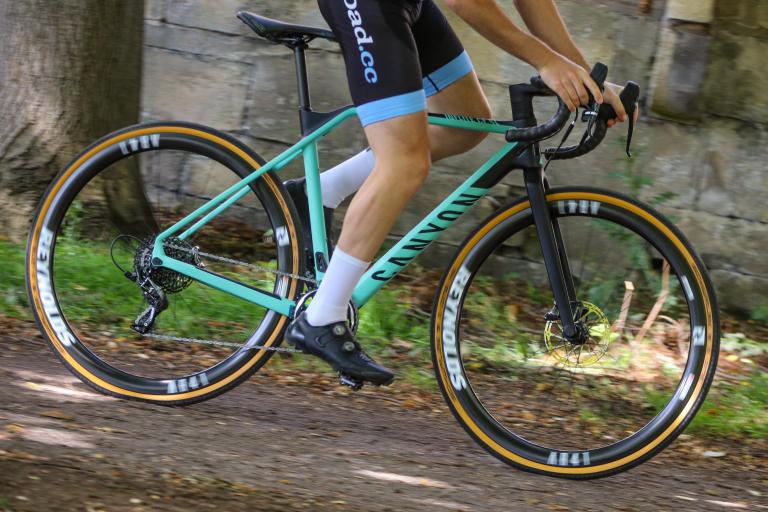
Add new comment
8 comments
God the pedantry gets grinding. Almost every normal cyclist I know in England over the age of thirty uses pounds as a meaningful and easily understood figure for bike weight. Yes metric might be the approved unit of measurement by European standards but this isn't France as others have stated. Does Kiwi Mike confront market stall holders who use imperial or grass them up to trading standards?. Even if metric is becoming the norm if you have not been raised with it you don't have that automatic feel for what it would feel like if you were to pick it up, to quote kilos and then think "ah yes it's about that much in lbs" is an English thing, you need a point of reference from the old standard to give the new standard any practical meaning.
Working on the assumption that there's a lot of schizophrenic pedantry out there, I generally mention both imperial and metric measurements in my tests, and will probably continue to do so while there are people out there who ask for their beer in pints. But don't get me going on mountain bike wheel sizes. Obviously I still leave the road cc editors to convert my ride distances from furlongs.
Have a look at the very top of the page, just under the products name.
There's the weight listed in grams, just like they do with every other product. It should be the first thing you look at.
Please stop using lbs - this is not the US.
What lbs? It gives the tester's weight in kg! They should use stone/lbs not kilograms, for people's weight, this is not France!
This is the UK - we are completely inconsistent in unit use here, that's our 'thing'. It gives us practice in mental arithmetic.
"the complete bike tipped the scales at 23.55lb"
Mostly this bit. You need practice in reading.
Seatstay caliper = dead to me.
It's a Cyclocross bike and you didn't do any running with it over your shoulder to tell us what that was like?